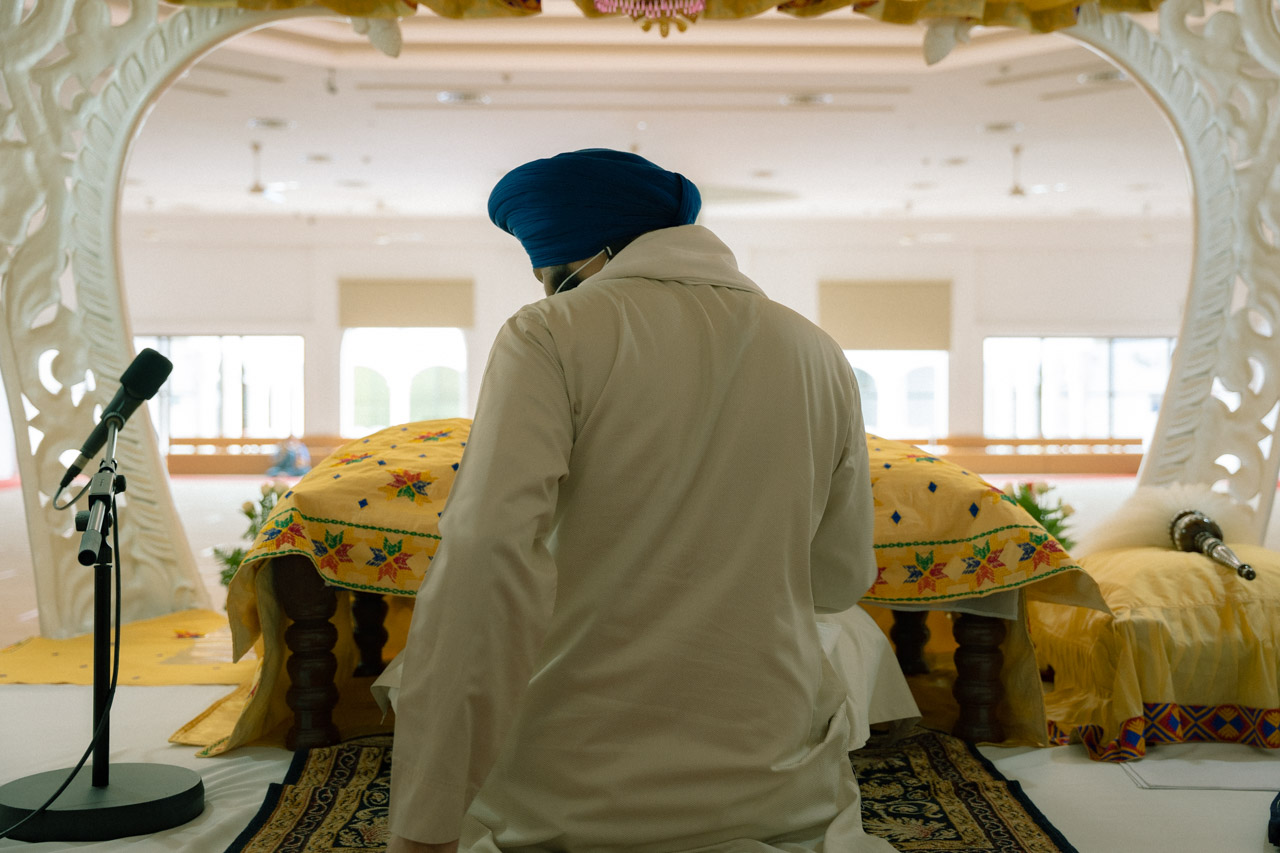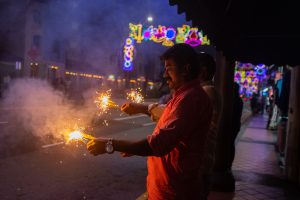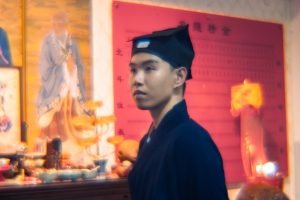All images by Thaddeus Loh.
Top image: Gyani Gurdip Singh, the head priest at the Central Sikh Temple of Singapore, sits before Sri Guru Granth Sahib Ji, the holy scripture of the Sikhs.
Constructive discussions on faith and ethnicity can be tough when folks lack an understanding of cultural practices. So for this entire month, we’re exploring the history and use of religious artefacts across different religions in Singapore.
After looking into the symbolism and iconography involved in Hinduism, Catholicism and Christianity, we now examine Sikhism.
On Vaisakhi 1699, the day of the annual spring harvest festival, Guru Gobind Singh gathered all the Sikhs in India to congregate at Anandpur, Punjab. Emerging from a tent, Guru Gobind Singh—the tenth and final human guru in Sikhism—commanded the crowd:
“I need one head.”
Out of the 80,000 Sikhs before him, one stood up. He followed the Guru into the tent.
Moments later, Guru Gobind Singh walked out of the tent alone and requested another head. A second brave soul volunteered.
This process continued till five brave ones had disappeared into the tent. Tension ran through the congregation.
Finally, Guru Gobind Singh stepped out of the tent with all five Sikhs not only unharmed, but dressed in blue, flowing robes. Mixing water with sugar in an iron bowl while reciting prayers to make Amrit (nectar), the Guru baptised them with it.
Thereafter, he gave them the new surname of “Singh”, which means “lion”, and commanded them to always wear five articles of faith: kesh (long and unshorn hair); kangha (a wooden comb); kara (an iron bracelet); kachhera (boxer shorts); kirpan (a dagger), which are collectively known as the Five Ks.
To this day, Sikhs worldwide still wear these five articles of faith at all times, regardless of their gender. As a spokesperson from the Central Sikh Gurdwara Board puts it, “in Sikhism … there is equality between both genders. That is a distinctive feature of Sikhism”.

Each article holds a different significance to Sikhs, explains Gyani Gurdip Singh, the head priest at the Central Sikh Temple of Singapore.
“These articles do not speak. But without speaking, they convey messages and meanings. They are guiding me… what to do, what not to do.” The Sikhs who wear them commit themselves to a life of devotion and righteous living, he says.
Over the course of an afternoon, Gyani-ji explained to RICE what these Five Ks are, and the meaning behind each article of faith in Sikhism. The rest of this article is recounted in Gyani-ji’s voice.
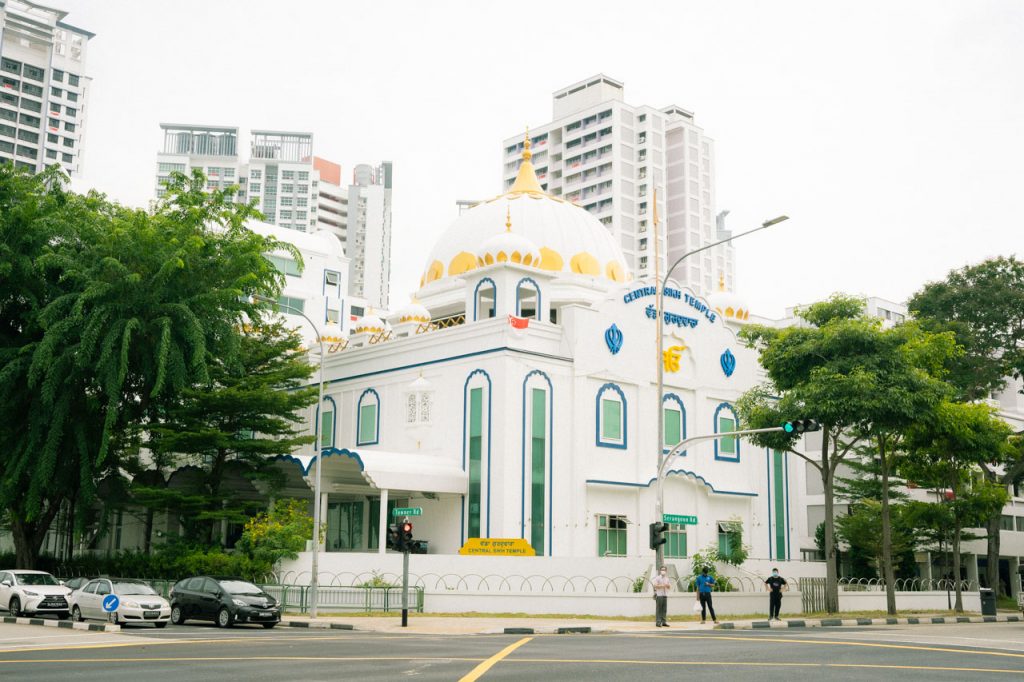

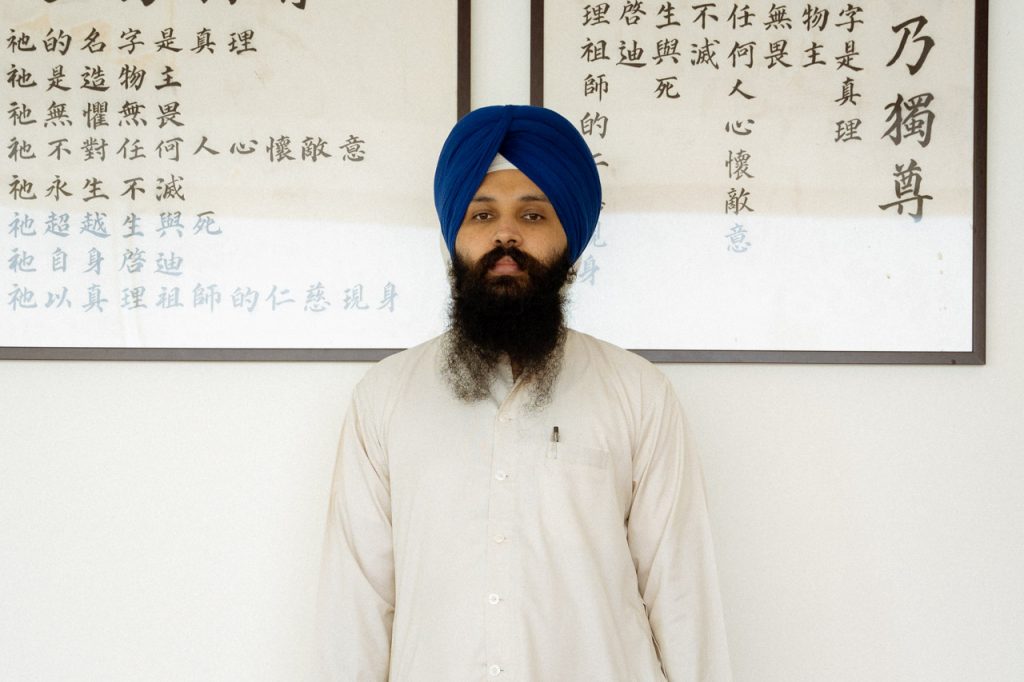
Kesha (Unshorn Hair)
God made us: our hands, our ears, our legs. Every part of our body is God’s creation. That includes our hair: it grows on the body naturally; it is created by God. If there were no need for our hair, God would not have made it.
Our gurus also tell us to live a natural life. We should live as we are born. Hair is natural: we do not make it grow; it grows by itself. Having long hair is natural. Having a beard is natural. And anyone who lives in sync with nature lives a blissful, peaceful life. It represents the adoption of a simple life by renouncing pride in one’s appearance and moving towards attaining spirituality.
Science, too, has shown that body hair has several functions. Hair on our scalp protects us from UV rays naturally. Hair in our nostrils works as a filter, preventing dust from going inside. Our eyelashes, eyebrows, hair on all parts of our body—there is significance in every strand of hair on our body.
There is a historical explanation for this as well. In historical India, only upper caste people would keep their hair. People of a lower caste and class were not allowed to grow a beard or have long hair. As a sign of equality, our guru instructed all Sikhs—regardless of socio-economic class or gender—to retain our natural hair.
Thus, we do not cut our hair. It is God-gifted, a part of our body; it is natural; it represents equality. Sikhs honour and accept it.
Kanga (Wooden Comb)
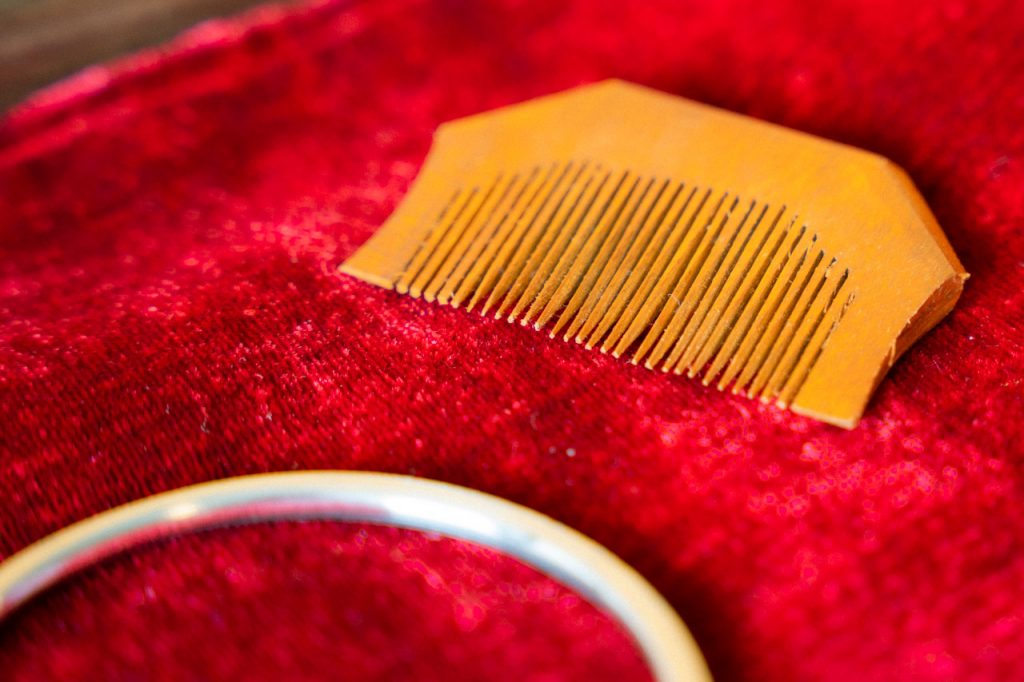
In ancient India, yogis would grow out their hair. But they didn’t comb it. As a result, their hair became matted.
When our guru instructed us to keep our hair unshorn, he also told us to keep the kanga tucked in our hair. It is used to comb the hair twice a day—once in the morning and once in the evening—so the hair is neat and tidy.
By doing so, we are also reminded to be nimble and organised. We cannot be lazy: when we wake up, after a shower, we comb our hair; before we go to bed, we comb our hair. It is a sign of discipline.
Kirpan (Dagger)
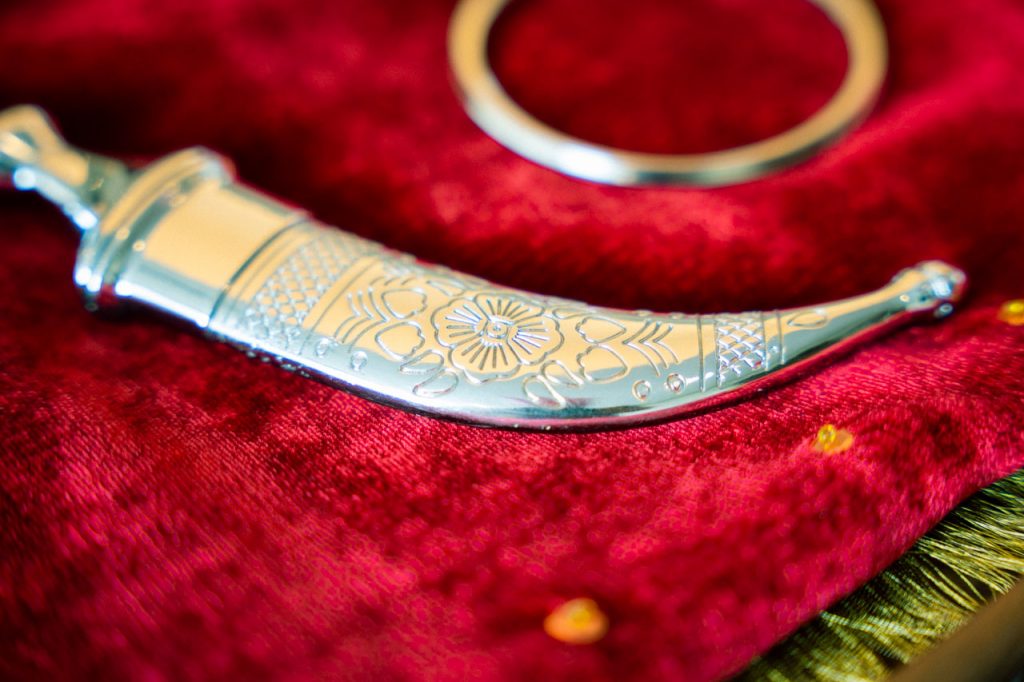
The kirpan is a symbol of dignity and respect. In historical India, slaves did not have a right to carry armament. But, as a form of equality, our gurus gave us a kirpan. Carrying it reminds us of keeping our dignity and those of others. We even keep it on when we go to bed at night. It becomes a part of you.
As an article of faith, it is solely for self-defence. We strictly do not hurt anyone with it. This is not the purpose of carrying a kirpan. Only when we are in danger or see someone in danger, can we use it for protection.
If you break up the word “kirpan”, you get “kirpa” and “aan”. “Kirpa” meets compassion; “aan” means honour. This describes the purpose of the kirpan—it is only used for protection of one’s honour, or to protect the honour of those who can’t protect themselves. It is to uphold justice. That is the sole purpose of the kirpan.
All Sikhs must wear the other four Ks at all times. But the Kirpan is the one article of faith that only a baptised Sikh can carry.
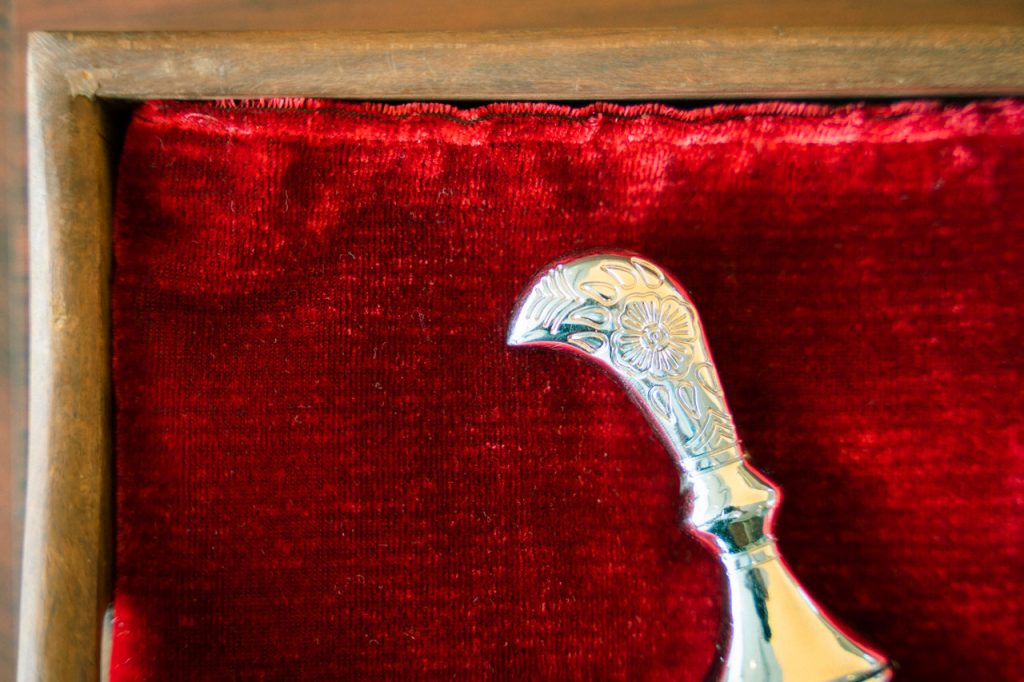
In Singapore, we are allowed to carry a kirpan with a maximum blade length of 6 inches, as long as it is worn under the dress. When taking international flights, we put the kirpan in the checked-in baggage. At these moments, some Sikhs put a smaller kirpan on a chain and wear it around their neck, in the same way many Christians wear a cross.
When we detach the kirpan from our body because of airport security reasons, it does not mean we have become non-compliant to Sikh practices. We imbibe and exhibit the values related to the articles of faith even if we are not wearing them.
The underlying directive is to adhere to the message. By wearing the 5 Ks and identifying as a Sikh, I commit to leading a life of devotion with dignity while facing the pressures of life with grace.
Kara (Iron Bracelet)

The iron bracelet is, of course, round. It is with no end and beginning. With these qualities, it is not an ornament; it symbolises the one universe we live in, which is created by the power of one God who has no beginning or end. Wearing the Kara reminds us that God is everywhere in this world.
When we wear the Kara on our arms, we are also reminded that our hands are meant to do good deeds. We cannot use our hands to commit crimes or hurt anyone. It symbolises our link to the community through righteous action.
For example, your phone is on the table. If you are not here, I can think: ‘It will be easy to steal your phone’. But when I raise my arm and extend my hand, the Kara will remind me: ‘You cannot steal. You are Sikh. Your actions have to be upright’.
These are the two main purposes of wearing the Kara.
Kachhera (Boxer Shorts)
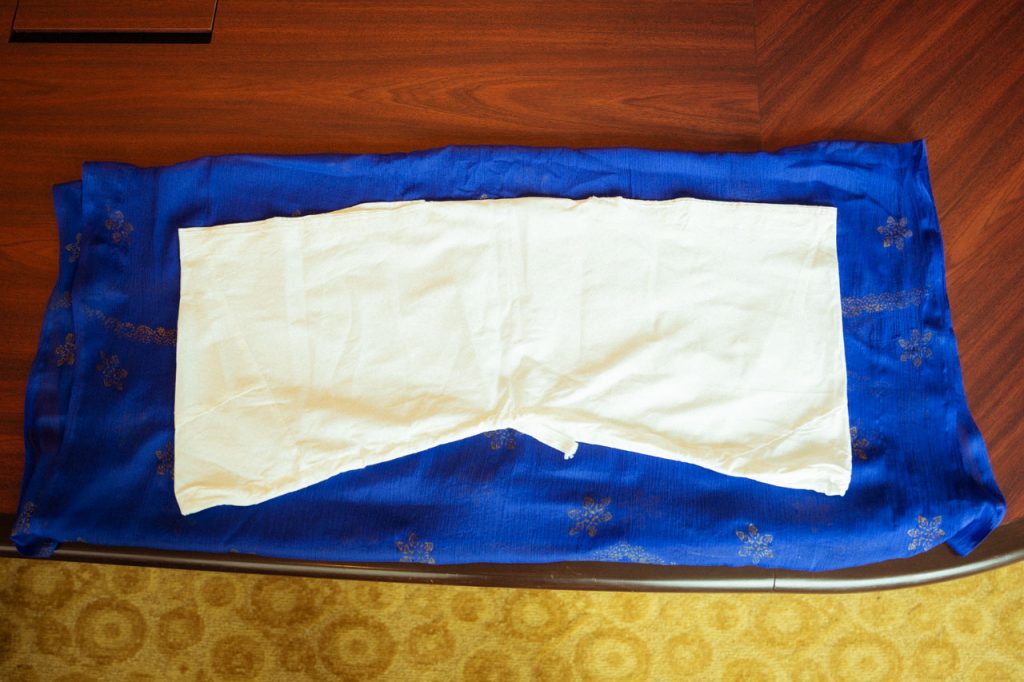
In the olden days, people used to wear baggy breeches as underwear, which assisted in leading an active lifestyle. Even though everything has been modernised today, including innerwear, breeches are still worn for certain sports like fencing and equestrian sports.
For Sikhs, we wear the Kacchera because it is a symbol of our high moral character and chastity. It reminds us we need to live within limitations.
If we are married, we cannot cross marital boundaries; we cannot commit adultery. It reminds us to be faithful to our spouses.

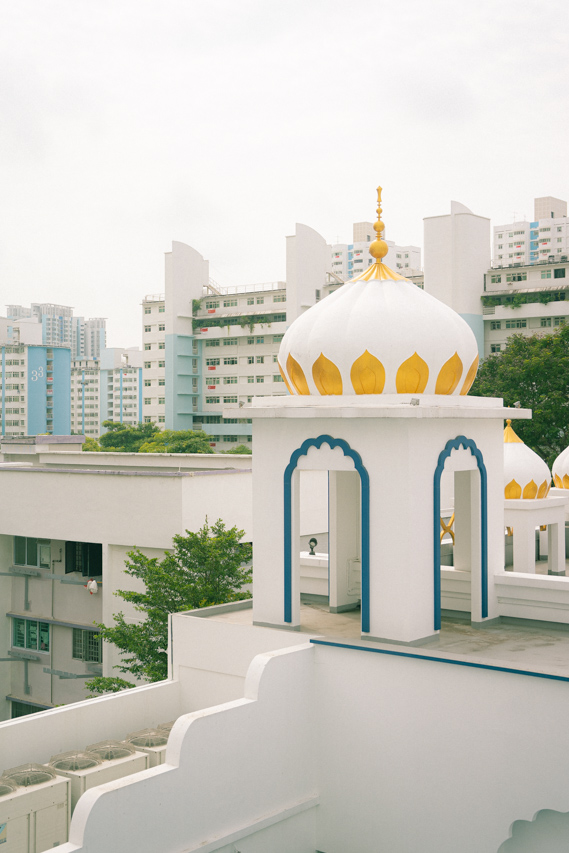

These are the five articles of the Sikh faith. Most of the time, they are covered: under the sleeve, hidden in our attire, tucked within our hair.
I do not need to display my articles of faith to anyone. They are for me. I need to imbibe the morals they depict.
They are symbols that constantly remind us of the values which we hold so dearly. They prompt us to follow the righteous path and heed the messages of our gurus through the right thoughts, speech, and actions.
Adorning the 5 Ks and following their messages, our spiritual journey will be smooth and successful as we’ll lead conscious lives in the will of the Almighty.
Tell us what you thought of this story at community@ricemedia.co. And if you haven’t already, follow RICE on Instagram, Spotify, Facebook, and Telegram.

